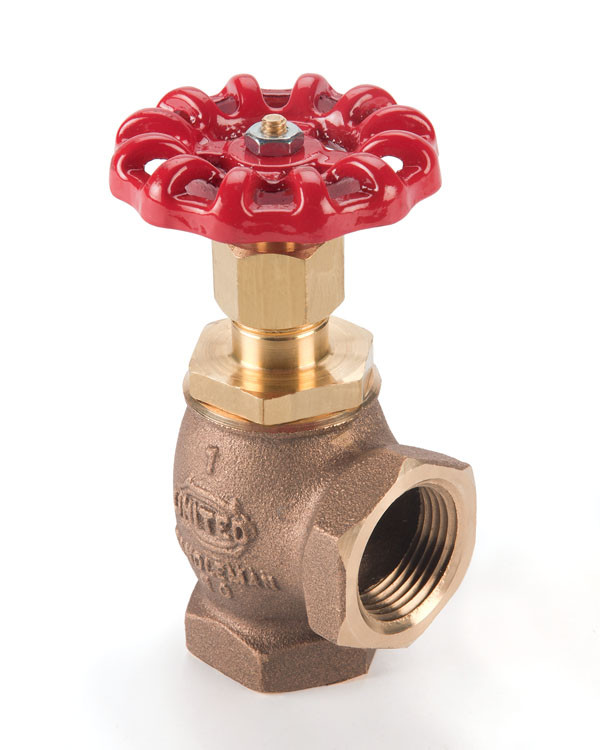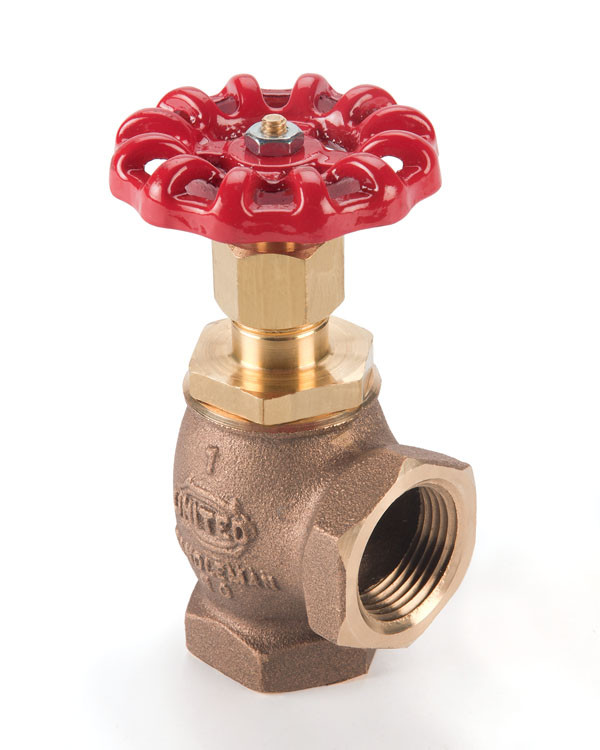Angle Valve
A Good Option for Tight Spaces
As its name implies, an angle valve has an L-shaped design, with one inlet and one outlet oriented at a 90° angle to each other. The valve is typically installed at a corner or bend in the water supply line, which is why it’s called an angle valve.
Angle valves are usually used to control the flow of water or gas in a piping system, either allowing it to pass through or shutting it off completely;
United Brass Works’ angle valves are designed to withstand the abrasive and corrosive materials found in industries such as mining, chemical processing, and wastewater treatment. They get their name from their angled configuration, a shape that allows for better flow control and reduced wear and tear on the valve stem and seat.
Angle valves allow you to turn off the water supply to a specific part of the plumbing system without turning off the main water supply. Other valves do this, but what makes the angle valve different is that it utilizes the form of a ball valve to redirect fluid flow by 90 degrees so that the fluid pathway is altered at a right angle. A regular ball valve typically handles only a straight-through flow configuration—with no 90° turns.
Angle Valve Purposes
- They isolate the water supply to a specific fixture or appliance when upgrading, repairing, or renewing plumbing fixtures, avoiding the need to cut off water to the entire building.
- In cases of water leaks or bursts, angle valves enable you to swiftly shut off the water flow to the affected appliance or fixture until necessary repairs are completed.
They are typically used in residential and commercial plumbing systems and chemical processing plants, regulating the flow of fluids and slurries in a piping system. They are commonly used to control the water supply to plumbing fixtures such as sinks, toilets, dishwashers, and washing machines. They function primarily to shut off or allow water to flow, particularly useful in case of leaks or plumbing repairs.
Because of their right-angle shape, angle valves are ideally suited for supply lines that come out of a wall and feature a 90º bend in their configuration, with the inlet and outlet forming an “L” shape. The angle valve is a shut-off valve, different from other valves designed for pressure regulation (pressure relief valve) or to prevent backflow (check valve).
Advantages
- Compact design.
- Easy operation.
- Often less expensive than other valve types
- Easy Repair Without Shutting off Water
- Useful for tight spaces
- Controls the direction of the flow
- Can be closed with a quarter-turn action
Disadvantages
- Not as efficient in fine-tuning flow rates as some other valve types
- Have a higher pressure drop compared to other valve types, affecting system efficiency

Model 126MM Angle Valve
Contact Us for High-Quality Needle Valves
United Brass Works offers a comprehensive selection of needle valves. Contact our team to find the ideal valve for your specific application.
